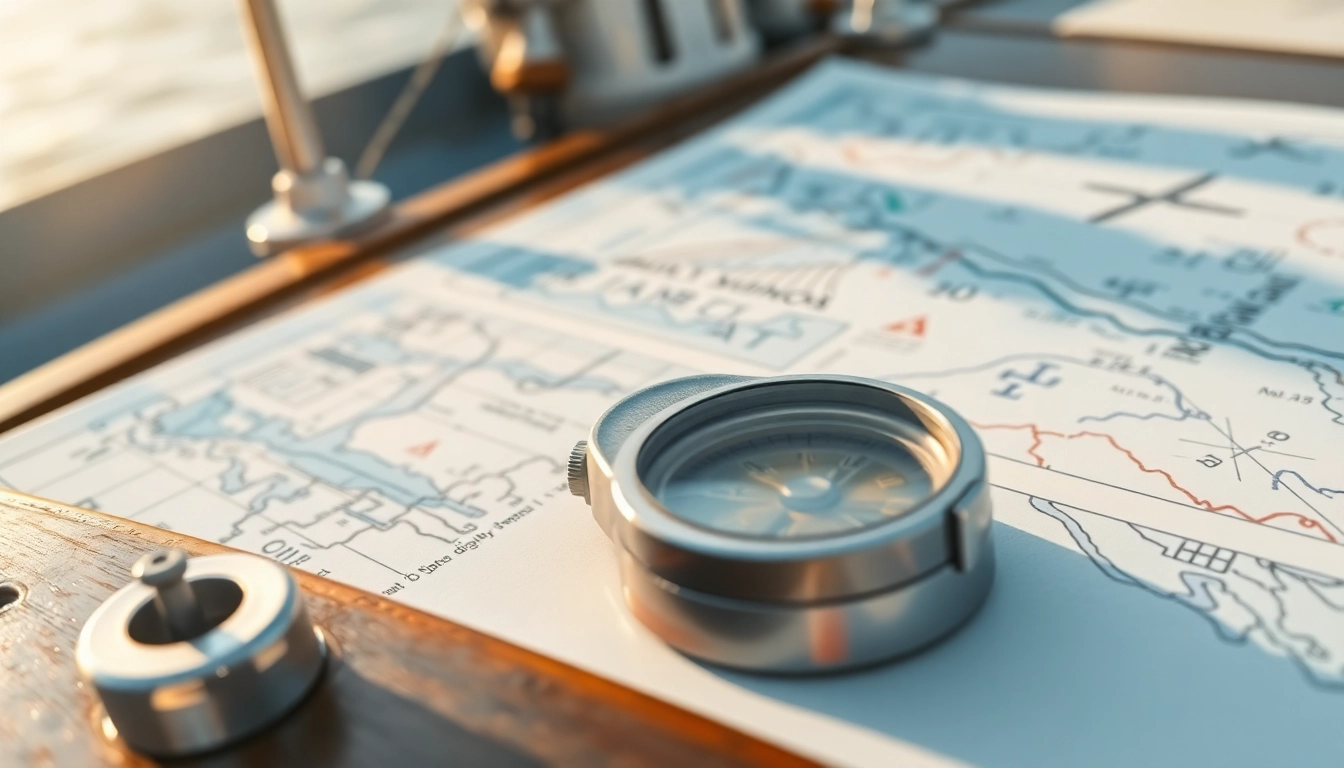Introduction to Marine Navigation and the Significance of Accurate Sailing Techniques
In the vast expanse of open waters, navigating accurately is fundamental to safety, efficiency, and success. Whether you’re a seasoned sailor or a novice enthusiast, understanding the core principles of marine navigation—particularly Boots Versegelung—is essential. This comprehensive guide explores the essential techniques, equipment, common challenges, and future trends that define effective maritime navigation, ensuring you are well-equipped to steer your vessel with confidence and precision.
Understanding the Foundations of Marine Navigation
The Basics of Navigating on Water
Marine navigation involves determining a vessel’s position and planning its course to reach a designated destination safely. Fundamental techniques include the use of charts, compasses, GPS systems, and traditional visual cues such as landmarks and celestial bodies. A robust understanding of these tools, combined with proper methodology, forms the backbone of effective navigation.
The Critical Role of Precise Sailing (Versegelung)
Precise boots versegelung ensures that a vessel remains on its intended course, minimizing the risk of drifting off track or encountering hazards. In competitive sailing or long-distance voyages, meticulous steering and course adjustments based on accurate data are vital. Modern navigators integrate traditional methods with new technologies—yet, classic skills remain invaluable for redundancy and safety.
Comparison with Modern Navigation Technologies
Today’s navigation heavily relies on electronic instruments such as GPS, radar, and auto-pilot systems. These tools offer high accuracy and real-time updates, but they can fail or be affected by environmental factors. Traditional methods like terrestrial landmark peilung (bearing measurement) and celestial navigation serve as essential backups and complement digital systems. Balancing both approaches enhances reliability and situational awareness.
Techniques and Methods for Effective Boots Versegelung
Determining Bearings and Stand Lines Accurately
One of the core skills is measuring and interpreting bearings. Using a compass or a bearing instrument, sailors identify the direction of prominent landmarks or navigation aids. The stand line, a fundamental concept, is a line on the chart representing the vessel’s position relative to a known object or bearing. Accurate measurement—correctly adjusting for magnetic declination—is critical for precise course plotting.
Utilizing Terrestrial Landmark Navigation
Identifying fixed terrestrial landmarks such as lighthouses, buoys, or coastlines serves as visual references for navigation. Effective use of these landmarks requires familiarity with existing charts and an understanding of their relative positions, ensuring the vessel remains on the planned course even without electronic aids. Night navigation and foggy conditions demand heightened observational skills.
Mathematical Calculations in Course Setting
Mathematical skills underpin accurate navigation, particularly in calculating the true course, distance, and corrections for leeway, currents, and tide effects. Techniques include the use of trigonometry for triangulation, calculating cross bearings, and applying corrections for compass errors. Navigators leverage tools — such as the versegelungspeilung — to ensure their routes align precisely with planned waypoints, optimizing safety and efficiency.
Essential Equipment and Practical Tips for Reliable Marine Navigation
Key Instruments and Devices
Reliable navigation depends on high-quality instruments. Basic equipment includes magnetic compasses, nautical charts, and binoculars. More advanced gear comprises GPS units, echo sounders, radar, and autopilots. For terrestrial navigation, handheld compasses, protractors, and bearing wheels facilitate precise measurements. Modern tools such as the BCC Snow Foam Gun and specialized cleaning gear ensure that electronic instruments remain operational under harsh conditions.
Guidelines for Navigating Under Different Conditions
Adapting techniques based on environmental conditions enhances safety. For example, in fog, reliance shifts toward radar and compass bearings. During night-time or in poor visibility, visual landmarks and celestial navigation become paramount. Regular calibration and maintenance—such as using the BCC Polierpuck and Polierschwamm—ensure optimal performance of instruments and surfaces.
Maintaining and Calibrating Navigational Equipment
Routine maintenance—cleaning sensors, verifying compass calibration, and updating charts—is vital. Use of quality cleaning products like the BCC Power Cleaner and the application of marine sealants preserve equipment integrity. Proper calibration minimizes systemic errors, enhancing positional accuracy and fostering trust in navigational data.
Common Errors and Strategies for Mitigation in Marine Navigation
Frequently Encountered Navigation Errors
Errors such as misreading bearings, ignoring tide or current effects, or neglecting compass deviations can lead to significant navigational deviations. Overdependence on electronic aids without cross-checking can become problematic if devices fail. Miscalculations in course corrections are common pitfalls, especially under changing environmental factors.
Minimizing Measurement and Human Errors
Qualified training, regular practice, and the use of calibrated instruments significantly reduce errors. Employing redundant techniques—like cross-referencing celestial navigation with terrestrial bearings—enhances reliability. Including tools like the BCC Towels Vorteilspack keeps surfaces clean and instruments functioning accurately in all weather conditions.
Emergency Procedures for Navigational Failures
Preparation is crucial. Maintaining updated charts, having paper backups of electronic data, and knowing emergency procedures—such as drifting to a safe harbor or deploying flares—are essential. Utilizing visual aids, sound signals, and communication protocols ensures safety until navigation is restored or assistance arrives.
The Future of Marine Navigation and Navigation Skills Development
Emerging Technologies and Trends
Advances include augmented reality navigation displays, integrated AIS (Automatic Identification System), and drone-based situational awareness. These innovations promise enhanced precision and safety, yet grounding in traditional skills remains vital to handle technology failures.
Blending Digital and Terrestrial Navigation Methods
Seamless integration of traditional skills with digital tools offers a comprehensive approach. Learning manual techniques like celestial navigation or terrestrial bearing measurement ensures a fallback in electronic outages, while modern devices can augment situational awareness and decision-making speed.
Continuing Education and Resources for Mariners
Courses, workshops, and online resources—such as specialized navigation manuals and simulation tools—support skill development. Engaging with organizations dedicated to maritime safety, utilizing high-quality products (like those available on this site), and practicing regularly keep navigation skills sharp and up-to-date.
